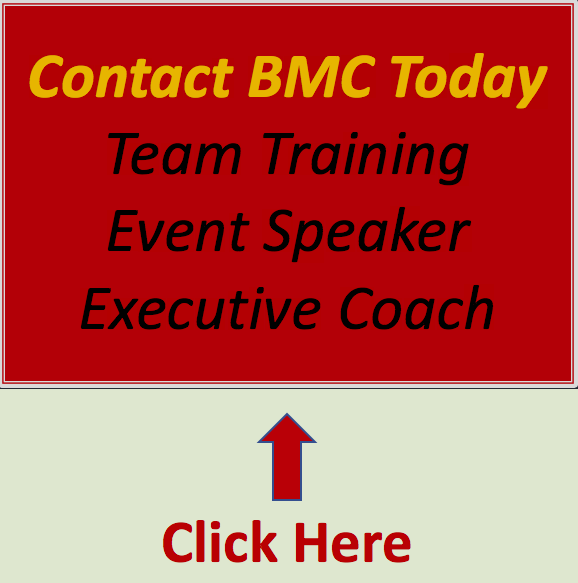Nobody Should Be Bullied At Work: Part 2
/Nobody should be bullied at work and this is Part 2 of my 3-part series I continue to explore how employees, leaders and organizations can approach important elements. I have linked to the other two parts of this series at the end of this post.
Thank you in advance for wanting to explore this complex topic.
As mentioned in Section I of this article, the situations bullies create cost the company a fortune due to low morale, low productivity and creativity as well as higher turnover. And, no matter what the cause, lower workplace satisfaction always has a long-term negative impact on customer satisfaction. Studies consistently show that great places to work often outperform average organizations. Glassdoor studies show on average, stocks of companies rated as ‘Best Places To Work’ earned 20.3 percent per year between 2009 and 2019, compared to 12.9 percent for the S&P 500. https://www.glassdoor.com/research/stock-returns-bptw-2020/
An Organization Must Be Proactive To Stand Against Bullying
We all hope we will be the exception and never have to deal with a bullying situation on our team. I hate to break it to you some day you will – and you will be lucky if it only happens once through your career. But careers are long and bullies are everywhere.
Education for everyone is the best first line of defence and it will support all other important initiatives you should take. As my dad would say, “An ounce of prevention is worth a pound of cure,” and in this situation he is right at both the organization level and team level.
1. Bullying Education
Don’t wait to see bullying to begin arranging anti-bullying education. There are as many nuances to bullying as there are colours, and what feels like bullying to one person can be completely acceptable to someone else.
Use education to make everyone aware of the signs of bullying. A thoughtful education plan makes sure everyone has a similar understanding of what bullying is. It also outlines the support resources that are available for themselves or for others if they feel they are watching someone else getting bullied.
Education begins to empower victims to take action and learn how address an issue. It also has the potential to disrupt issues early before they become big. And while I say this, I also have to point out three things:
Everyone must participate in education and participate in the exploration of what it is like to be a bully and what it is like to be bullied. It assumes everyone approach this topic with curiosity.
To have impact on someone who is a bully (or a potential bully), if education is going to help, the individual must also be self-aware. They have to realize they are responsible for their behaviour and for how they are seen by others. This won’t always happen and will often require a more direct approach.
Thirdly, help a bully (or potential bully), they have to want to not be one.
Note: Consider including this education within discussions about Diversity and Inclusion (D&I) to even further empower your team and balance your workspaces. Education should also be part of all on-boarding programs.
As part of the education program I believe it’s important to discuss how and why situations that may trigger one person may not trigger another. Different people have different communication styles resulting in one person’s actions being interpreted as aggressive. In this case, education is beneficial for both parties. Education also is important to stay open and mindful of others. For example, everyone can learn how and why their actions may evoke unexpected responses in others while at other times they may be unintentionally triggered by others who have a different communication style.
Education helps each of us recognize when we are triggered and to explore why and how we respond. This awareness helps us to have productive conversations early-on about expectations and how we are feeling which often results in building greater trust between individuals and teams.
It’s worth repeating that as everyone learns about what bullying looks like, it provides an opportunity for everyone self-reflect and recognise if our own actions may be perceived as bullying by someone else, even if their intentions are innocent. Two important things here. First, self-reflection isn’t guaranteed. Just because someone participating in this training doesn’t mean he or she recognizes their actions as being bullying or takes responsibility for them. Also, even if they do recognize the impact of their actions, they have to want to not be a bully. Some people will not want to let this go… or even know how to, especially if it has become part of their core personality and they think it has served them well in the past. The thing is, while they may think being a bully has paid off for them, they have way of knowing how successful they could have been if they were not seen as a bully, but instead seen as a supportive leader and honest, trustworthy collaborator.
This approach is important because it teaches everyone that we must all work together, recognizing, celebrating and giving room for each other’s unique individuality. To be clear, this is not a ‘Get Out Of Jail Free’ card. Everyone must learn that they have a responsibility to their reputation and the health of the corporate culture.
2. Include Everyone In Defining, Updating And Reviewing Policies
I like to think of policies not as a ‘What To Do When’ reference but instead as a guideline that can adapt to meet the needs of specific situations. That said, policies should include three steps.
An agreement of how we should all behave and why. This should happen from a legal perspective. It’s also imperative policies consider the values of the organization. This step requires training & numerous discussions for all. This requires the organizations values are clearly defined (which in itself is an inclusive process that easily takes months).
Shared awareness that different people communicate in different ways, manage hierarchy and manage urgency. This includes recognition that how we communicate is both an instinctive and learned behaviour, shaped by many things including our family and cultural experiences / norms: This requires training & numerous discussions for all.
An agreement by all on how to approach conversations respectfully and how / where to escalate conversations in a safe and respectful way for everyone. Difficult conversation training also requires training & numerous discussions for all; the extra benefit is that this training is useful throughout our career.
Everyone should feel they are investing in the process; making sure it is understood and both safe to discuss situations in private with someone and an easy-to-follow process.
3. Set Up Allies For Victims: Different Avenues For Escalation / Discussion
Leadership will attract behaviour that is identified as bully behaviour. Leadership will also attract behaviour that is perceived as bullying, but it is not… it’s Performance Management (more on this below). But bully behaviour is not isolated at the leadership level; it’s estimated that close to 40% of incidence happen by peers or lower-level employees… and sometimes by customers or suppliers.
Because a leader may be the bully or the perceived bully, it may be impossible or uncomfortable for an employee to directly approach their leader. It’s therefore important there are trained individuals who can be the first line of discussion and potential escalation for people feeling bullied. At times, these individuals can be employees intentionally chosen from different levels of the organization. But, support outside of the organization is also a healthy idea, especially for smaller organizations.
These ‘Allies’ should have training that helps them recognize potential bully behaviour so they can be an impartial sounding board and emotional support. With that knowledge, these persons can begin to safely, confidentially and impartially guide the individual about the initial steps of discussion and escalation which may include coordinating with an internal or external professional who specializes in workplace investigation and mediation.
It is important that when a complaint is made, both the victim and the alleged bully deserve an impartial, confidential, objective investigation. In no way should a reprimand or behaviour coaching take place before this impartial step is completed.
The best resolutions to a confirmed bullying situation can be simple or complex. In some cases, the bully may not have noticed they are behaving badly – they may be acting exactly how they were raised – therefore demonstrating learned behaviour. On the other hand, a bully may know exactly what they are doing. Either way, they do need to recognize they are responsible for their behaviour and that their behaviour has to align with organizational values and policies. They also have to want to change.
A constructive solution will in all likelihood include sensitivity and possibly policy training for the bully. A solution will also likely require emotional support and professional coaching for all parties impacted – including those rightfully or wrongly accused. If training, arbitration and counselling doesn’t resolve a confirmed case, zero-tolerance must be the next step forward for the health and safety of all involved.
Conclusion:
Please continue exploring this topic in any and all ways possible. In my three articles I cover just the beginning of an important topic with many variabilities.
Nobody Should Be Bullied At Work Part 1: Explores What Is And Makes A Bully
Nobody Should Be Bullied At Work Part 3: Explores Bullying versus Performance Management
If you feel you want to talk to someone about an experience you’ve had or are having, don’t wait… there are many services where friendly and well-trained people are on hand. Just search online for something like ‘bullied conversation line’ and you will find many options. If your situation is not urgent and you believe I can help, please send me an email at bruce@brucemayhewconsulting.com
Thank you for reading.
Bruce
PERSONAL NOTE OF GRATITUDE: Thank you to the wonderful people who added to this article by discussing their experiences with me and making suggestions. You are some of the strongest - most courageous people I know. I am honoured to know you and you make the world around you a better place.
Bruce Mayhew Consulting specializes in customized Email Etiquette Training, Leadership & New Leadership Development, Generational Differences, Time Management Training and other soft skills training solutions in Toronto and across Canada. Bruce is also an Executive Coach to a few select clients.
Bruce is an experienced motivational speaker in Toronto and has inspired audiences across Canada and within the USA and the UK. Bruce works hard to always make sure your training event, conference, retreat, or annual general meeting is a success.
Thank you for stopping by.


